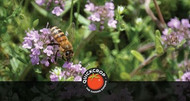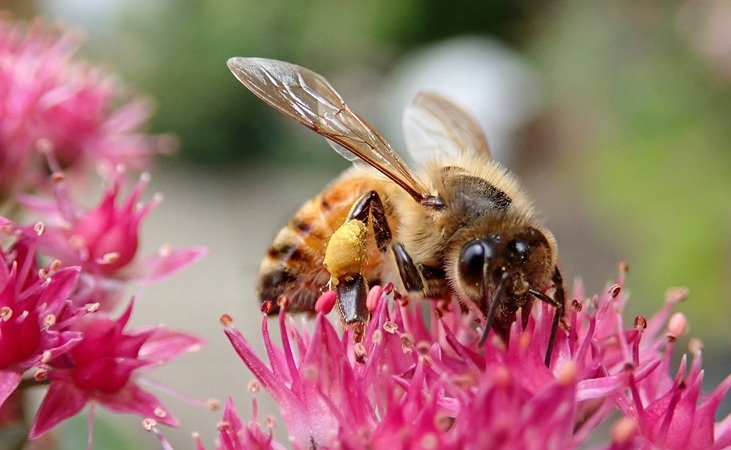Bee Friendly Plants
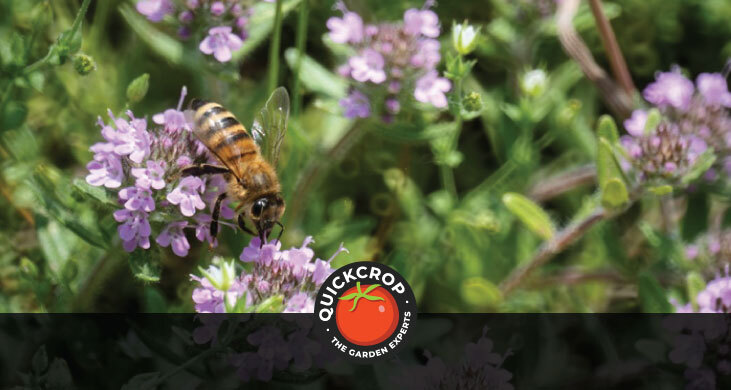
It's no secret that bee populations are under threat due to issues like habitat loss, pesticide usage and shortages of food. More than half of Ireland's bee species have shown a marked decline in their numbers since 1980 (National Biodiversity Data Centre "Bee Declines." Pollinators.ie, 22 Mar. 2024, https://pollinators.ie/record-pollinators/bees/bee-declines/).
As gardeners we can do a lot to help. There are a wide range of plants that you can grow which will provide nectar, pollen or even shelter for bee species. This includes ornamental plants, herbs, hedging or trees.
Of course, the bees have something to offer you in return: many flowers and fruit crops (such as strawberries, cucumbers or bluberries) rely on pollination from bees, while they also create a pleasing background hum of activity in your garden. A bee-friendly garden is a more productive garden and a happier space.

Make Your Home a Nature Reserve - Donna Mullen
View Product10 Bee Friendly Plants for Your Garden
1 - Lavender: an evergreen shrub with tall-growing spikes.
2 - Thyme: a culinary herb with aromatic leaves and tubular flowers.
3 - Willow: Its golden yellow catkins carry early pollen and nectar.
4 - Sedum: Blooms into autumn (late season nectar source).
5 - Borage: A herb with blue star-shaped flowers.
6 - Catmint: Popular with both bees and cats.
7 - Crocuses: Early flowering, colourful perennials.
8 - Chives: Another bee-friendly herb with pom-pom like flowers.
9 - Viburnum tinus: A valuable source of nectar in winter.
10 - Ivy: Late season flowers; very valuable to bees and wildlife.
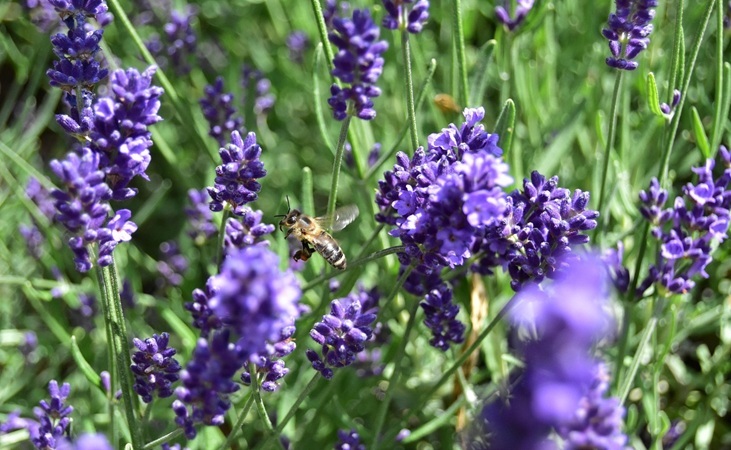
Lavender
It’s said that bees can see shades of violet or purple particularly clearly, so it’s perhaps not surprising that many purple-flowered plants are known for being bee-friendly. Chief among them is lavender, which draws pollinators in like a magnet.
This is an evergreen shrub native to the Mediterranean, but it can also thrive further north when given a free-draining soil and plenty of sun. Characterised by its tall-growing spikes and aromatic scent, lavender does really well in pots (which are naturally more free-draining), and can be an attractive addition to cottage gardens, balconies or more formal gardens (try growing it along borders in the latter).

Native Irish Grown Wildflowers - Cottage Garden
View ProductThe small tubular flowers are very popular with long-tongued bumblebees, as well as leafcutter bees. The nectar-rich flowers bloom from midsummer onwards, and pruning the foliage can encourage more growth when initial flowers fade.
There are quite a few different varieties of lavender; common varieties grown include English or Common Lavender, the dwarf variety Hidcote, or French Lavender with its distinctive crown of purple bracts.
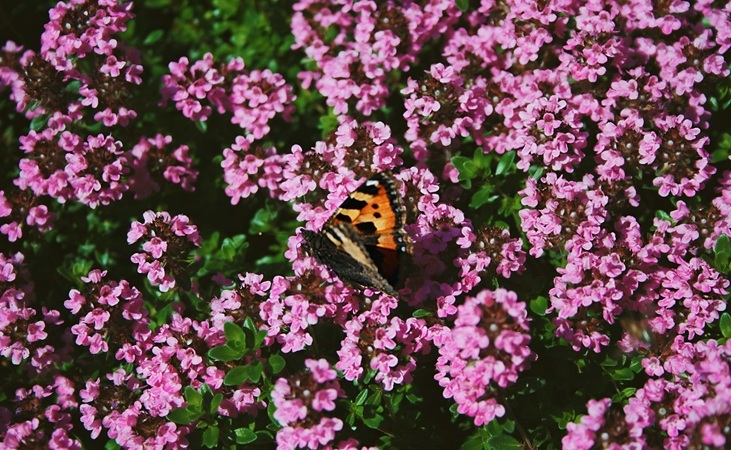
Thyme
There are a number of culinary herbs that are attractive sources of nectar for bees. One such example is thyme, whose highly aromatic leaves can be picked year round.
Also native to the Mediterranean region, thyme has been valued for centuries not only for its culinary uses but also for its medicinal properties.

Thyme Seeds
View ProductThe plant typically grows as a low, woody shrub with small, oval-shaped leaves and tiny, tubular flowers. These flowers can range in colour, from white and pale pink to lavender.
Thyme can be grown along paths or borders but it is also an excellent container garden herb. It’s easy to grow if you have a warm and sunny spot with free-draining soil.

Container Growing Soil Mix - 750L Bulk Bag
View ProductIn the kitchen, thyme is prized for its warm, earthy flavor with subtle minty and lemony qualities. It pairs well with a wide range of dishes, from roasted meats and vegetables to soups, stews, and sauces.
Thyme’s clusters of small flowers are rich in nectar and attractive to pollinators, including honeybees, bumblebees and leafcutter bees. As far as specific species go, Creeping Thyme - with its mat-like growth habit - is particularly renowned for its bee-friendliness.
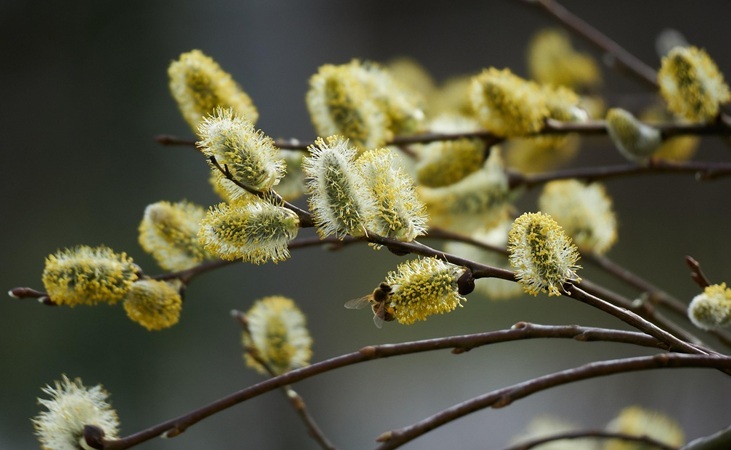
Willow
As one of the first trees to flower in early spring, willow is a valuable early source of pollen and nectar when bees are emerging from hibernation. These are carried in the plant’s male ‘catkins’, which are typically golden yellow when ripe and covered in fine hairs.
Goat willow (aka pussy willow) for example provides protein-rich pollen and nectar for queen bumblebees, helping them build up energy reserves and begin the important work of building nests. The cute male catkins look a bit like cat’s paws.

Willow Salix alba - White Willow, 1-3 pack
View ProductAlong with its bee-friendliness, willow has considerable wildlife benefits: supporting over 200 insects, providing habitat for birds and bats, and serving as a larval food plant for various moth species (such as the Poplar Hawk Moth).
Willow can function as a very effective shelter belt in exposed locations. There are many different varieties to choose from, and it can take the form of small bushes, hedgerow or fully grown willow trees.

Willow trees are best grown from cuttings (known as withies), as growing from seed requires specific conditions. They can even be grown in pots depending on the type (dwarf varieties are ideal), and as long as you provide the right conditions and keep on top of pruning.
Citation: "Bumblebees Among the Trees." Bumblebee Conservation Trust, https://www.bumblebeeconservation.org/bumblebees-among-the-trees/
Sedum
Sedum is a hardy and drought-tolerant perennial that acts like a magnet to bees and pollinators. Attractive pale pink to magenta flowers bloom in dense clusters from late summer into autumn, serving as a valuable nectar source when other sources have dwindled.
The flat clusters provide a handy landing platform for honeybees, bumblebees and solitary bees. Hundreds of tiny flowers on each cluster provide a veritable feast of nectar - bees are known to take their time foraging! Particularly popular varieties include Sedum Spectabile (aka ‘Ice Plant’) or Sedum Purple Emperor.

Sedum Spectabile 'Brilliant' - P9 & 1L Pots
View ProductThese plants are also characterised by their succulent, fleshy leaves which store water, enabling them to thrive in dry, poor soil.
After the flowers have faded they can be left over the winter to serve as insect habitat; hoarfrost can also form on the foliage, creating a striking visual effect in a largely dormant garden.
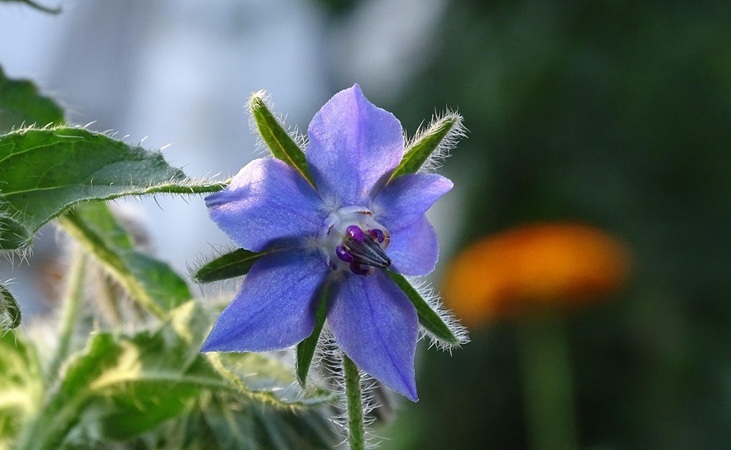
Borage
Borage is a visually captivating annual herb, with blue star-shaped blooms emerging from drooping, fuzzy, silvery flower heads. The nectar-rich flowers are very popular with honeybees and bumblebees, earning it the nickname ‘bee bread’.
What’s more, borage’s nectar reserves are regularly replenished, and the downward drooping flower heads prevent the nectar or pollen from being washed out in heavy rain. Thus it is a very reliable and long-lasting food source (typically flowering from June to September).

Borage Seeds
View ProductThe bushy plants can grow up to 60cm in height, and once established it will self-seed very effectively. Borage is also highly regarded as a soil-improving cover crop, partially due to its deep taproot.
Borage is an edible plant with a honey-like taste, but caution is advised as it can be toxic in larger doses - it can also be very toxic to cats, so something to keep in mind if you have cats sharing your garden. Its benefit to pollinators is unmistakable, though.
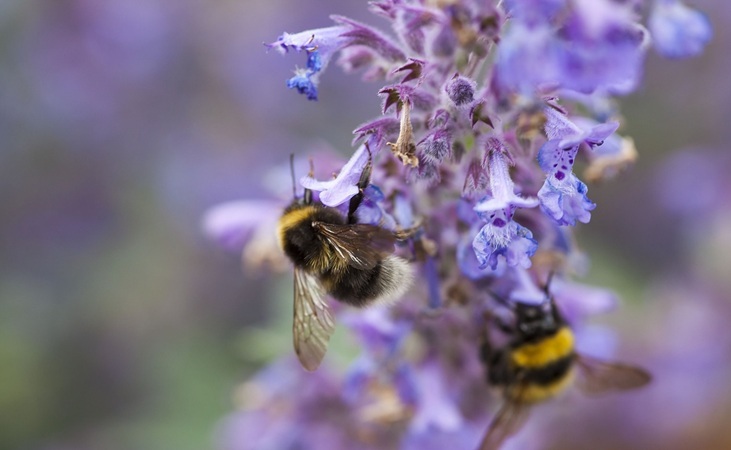
Catmint
Catmint (aka Nepeta) is another bee favourite, with aromatic grey-green foliage and long-blooming spikes of tubular purplish-blue flowers. It can often be mistaken for lavender from a distance, and is similarly attractive to bees.
A low-maintenance perennial, it thrives in a sunny spot with well-drained soil and is very suitable for borders or pathways, or for softening the edges of garden beds. Catmint will also grow well in containers.

Nepeta nervosa (Catmint) Blue Carpet - P9 & 1L Pots
View ProductThe flowers are rich in nectar and particularly appealing to long-tongued bumblebees, who can more readily access the nectar. They bloom throughout the summer. ‘Walker’s Low’ is one widely grown cultivar with a sprawling, graceful habit and prolific flowering.
As for why it’s called ‘catmint’, cats are very drawn to the foliage, whether they’re excitedly rolling around on the spikes or having an idle chew.
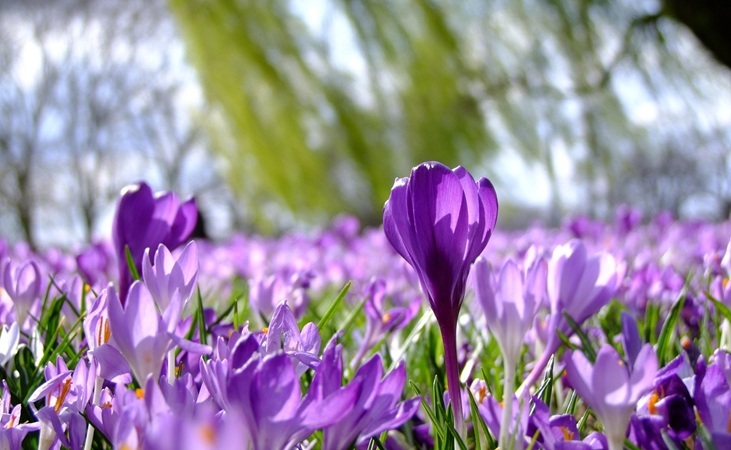
Crocuses
Crocuses are hardy perennials that can bring a welcome burst of colour to the garden early in the year, flowering as early as February in some cases. They are characterised by their vibrant, cup-shaped blooms and feathery foliage.
Early flowering crocuses are a vital nectar source for emerging bumblebees, with the RHS recently reporting that it was one of the top 5 most visited plants between February and May. Bumblebees are even known to shelter in them overnight.
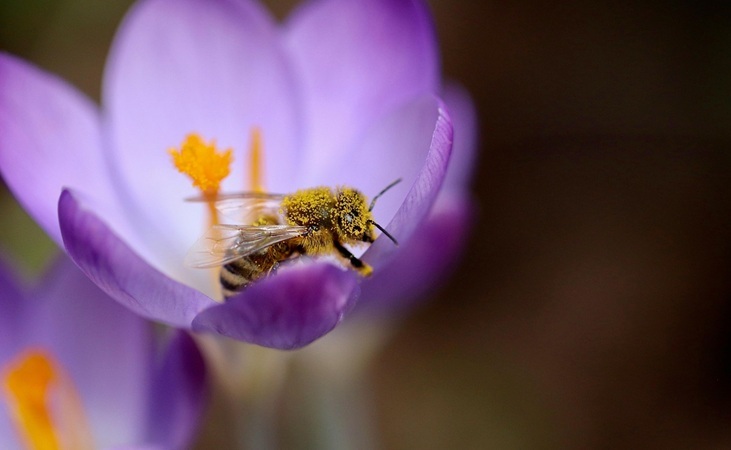
Crocus varieties come in a range of colours, including purple, white and yellow, and the flowers are often lightly scented. They thrive in borders, lawns or containers, are low maintenance, and return year after year, sometimes popping up in unexpected areas of the garden.
These flowers are typically planted between September and November to bloom the following spring, but there are also late summer or autumn blooming varieties such as Saffron Crocus.
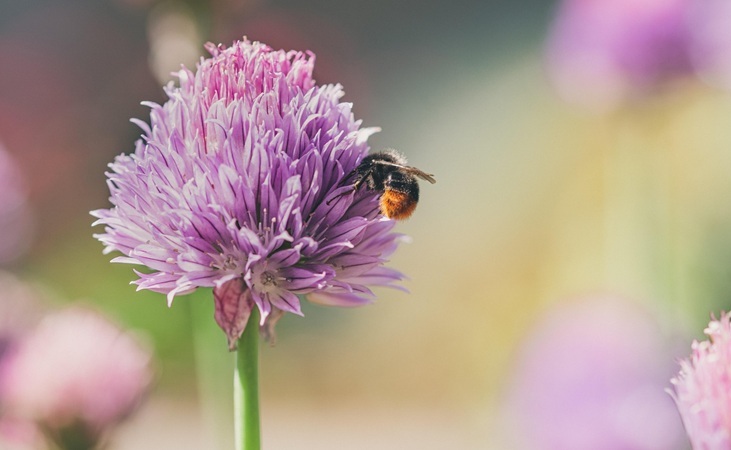
Chives
A very popular and easy to grow herb, chives are pretty much entirely edible - from the bulbs to the leaves to the flower heads. In the kitchen, chives are cherished for their delicate onion flavour, which pairs beautifully with eggs, potatoes, soft cheeses, and salads.
That isn’t their only appeal though: it is also an attractive ornamental plant, while the globe-shaped purple/mauve flowers are a rich pollinator-friendly source of nectar and pollen. You are likely to see them visited by bumblebees, honeybees and leafcutter bees alike.

Chives, Fine Leaved
View ProductChives are well suited to containers or sunny borders, and they thrive in well-drained soil with plenty of sunlight. They are a perennial herb, meaning they will come back year after year, although flowering may be modest in the first year.
Deadheading fading flowers or cutting the leaves back can encourage a second flush of growth in late summer or early autumn.
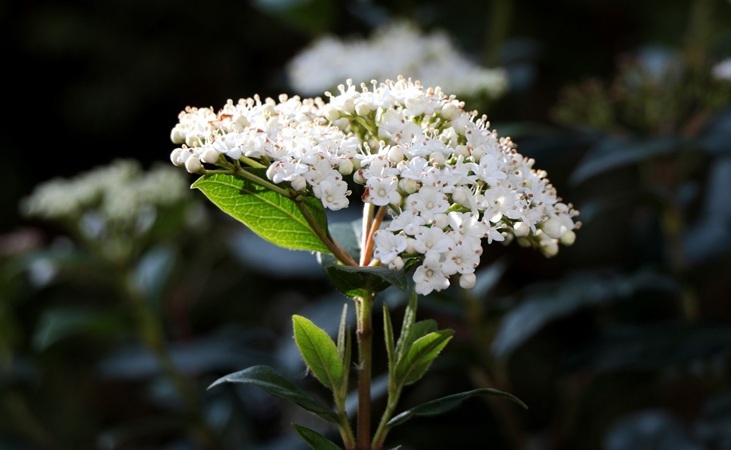
Viburnum tinus
Although it is common for bees to die out or enter a period of dormancy in winter, there are exceptions. Buff tailed bumblebees can remain active in winter months, while some honeybee species will venture out on warmer winter days to forage for nectar.
Nectar sources, then, can be a valuable lifeline in winter. One such source is the evergreen shrub Viburnum Tinus. Its small white or pinkish flowers bloom from December (or sometimes November) through to April.
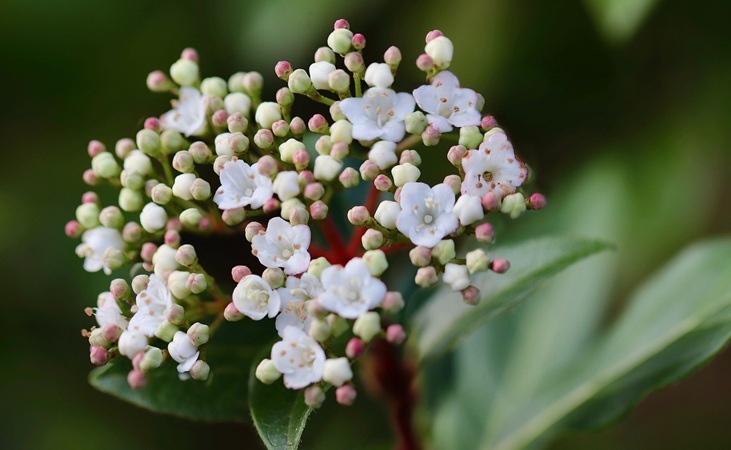
The flowers have a light fragrance and contrast nicely with glossy dark green leaves. The shrub also produces blue/black berries which serve as a food source for birds. Indeed Viburnum Tinus makes for a good wildlife-friendly hedging option.
‘Lisarose’ is a popular variety: a dense, bushy shrub with a growth height of up to 3 metres.
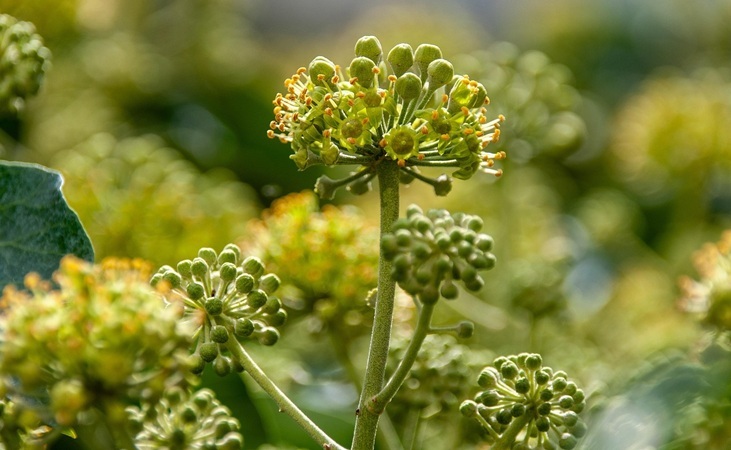
Ivy
Ivy is one of the most important late-season plants for bees and other pollinators, offering an abundance of nectar and pollen into late autumn and early winter.
Mature ivy (typically five years or older) produces small yellow-green flowers in dense clusters from September through November - a time when many pollinators are preparing for winter and stocking up energy reserves before the cold sets in.
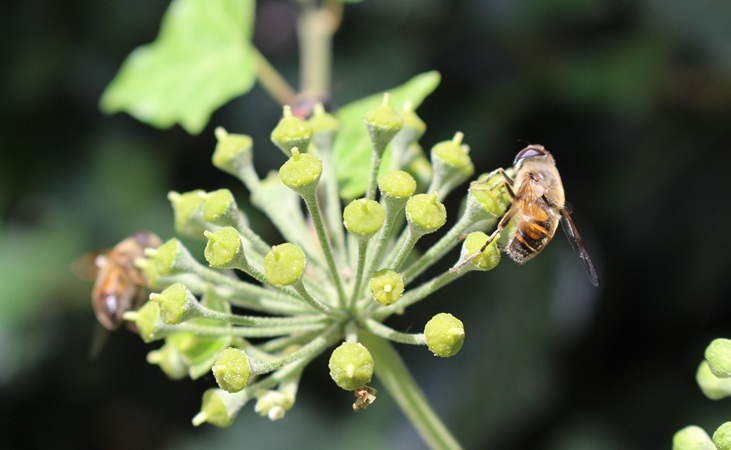
Studies have shown that ivy can supply up to 80% of the nectar available in some areas during the autumn months. This makes it invaluable not just for individual bees but for whole colonies, especially for overwintering queens who rely on late-season blooms for survival.
Ivy’s wildlife-friendliness extends further than bees; the dense foliage offers nesting and roosting sites for a variety of insects, birds, and small mammals.

Crab Apple - Malus Sylvesteris, 1-3 Pack
View ProductTips for a Bee Friendly Garden
- Single flowered plants are generally much more bee friendly than double flowers: the latter have extra rows of petals instead of nectaries and stamens. The easier the petals are to access, the more bees will be drawn to them. This is why flowers with 'open' or flat flower heads are often observed to be bee friendly.
- The vast majority of bees will not sting when they are out foraging for nectar or pollen. Bee hives are something to be wary of, of course. But when bees are buzzing around the garden they have little interest in humans.
- Bee friendly plants that flower late (e.g. into autumn) or early in the season can be invaluable, as this is when food sources can be dwindling, as well as a time when bees are either emerging from a long spell of dormancy or stocking up energy for the winter.
- Allow native hedging to flower if you want it to be of benefit to bees and pollinators.
- Tubular flowers tend to favour long-tongued bumblebees.
